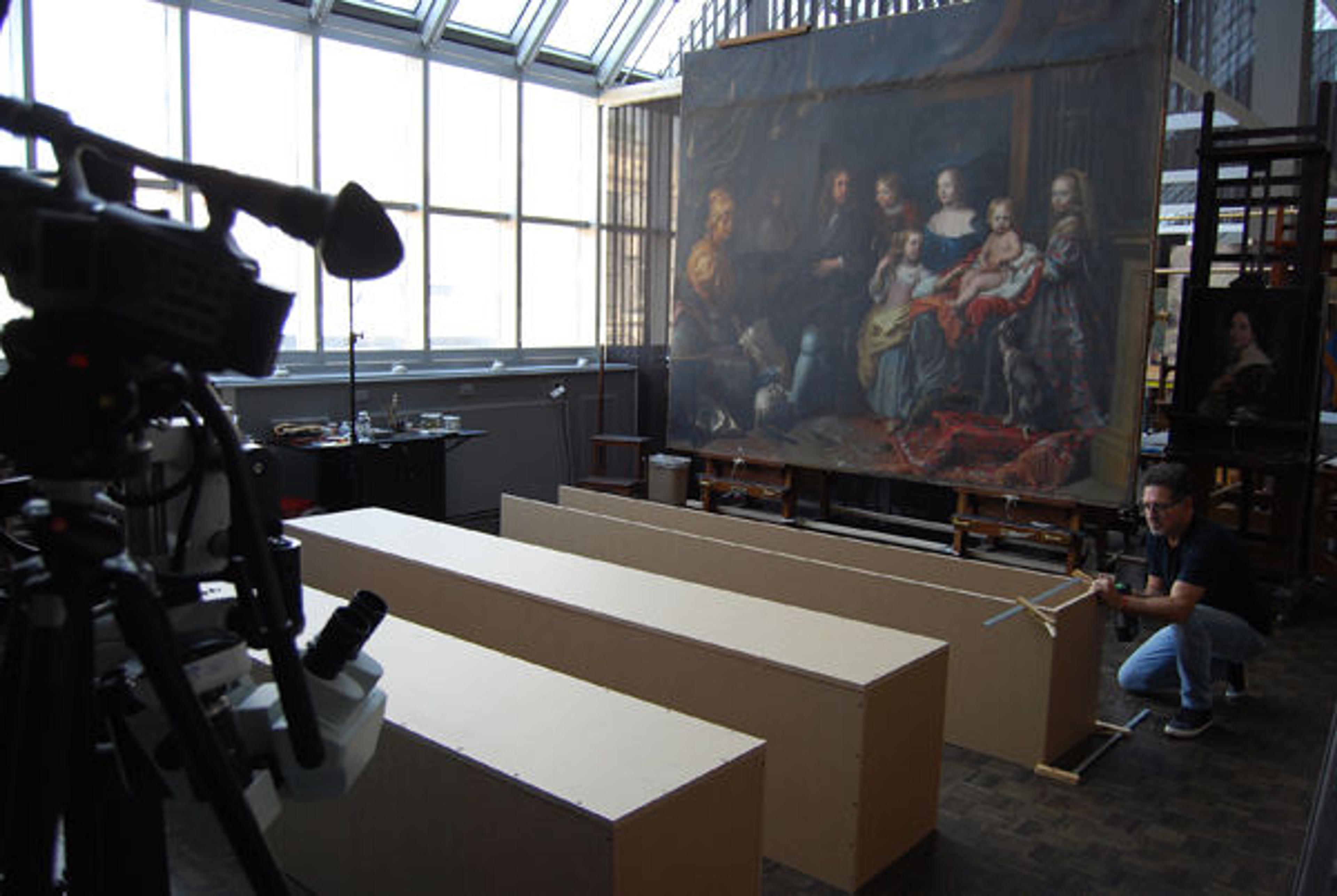"Please Lie Down; This Won't Hurt a Bit": The Jabach Conservation Continues

George Bisacca constructing a platform to hold the painting while work proceeds on the reverse side of the canvas
«Now that I've finished the cleaning of the Jabach portrait, it is time to deal with the distortion resulting from the top of the picture having been folded over (as described in my last post). We first had to construct a platform on which to lay the picture face down while working on the reverse side of the canvas. This was custom built by our structural specialist, George Bisacca.»
I am including a few short clips of film shot and edited by Met colleagues Kate Farrell and Sarah Cowan from the Department of Digital Media that give a good idea of the sequence of events.
With the help of colleagues, the painting is brought to the edge of the platform and then laid down on the surface, which has been pre-prepared with thick, archival blotting paper. Assisting me are Isabelle Duvernois, Jonathan Graindorge Lamour, Alan Miller, Sophie Scully, and Peter Van de Moortel.
I remove the staples and tacks from the rather rudimentary strip-lining—strips of canvas that were added around the edges of the reverse of the painting in 2012 to strengthen the old tacking margins and facilitate restretching.
We lift the stretcher off the reverse of the painting. Assisting me are Isabelle Duvernois, Charlotte Hale, and Peter Van de Moortel.
I remove the strip-lining. This was an easy process since the wax used to adhere the strips has very poor peel and shear strength, making it an unsuitable adhesive choice for a strip-lining. Inevitably, the wax remaining on the reverse of the canvas will have to be removed in a separate step.
I start to remove the copious amounts of wax that were applied to try to stabilize the area along the fold in the canvas. The wax has to be removed in order to begin the process of correcting the distortion; the first step was to scrape away the bulk of the wax manually and then, with a solvent gel, soften the residues, which were cleared away with solvent.
I later repeated the final step on the remaining areas of wax, including the edges. Only now is it possible to make an informed decision about the best way to tackle the actual distortions. Clearly the use of moisture will be required, and that is why it was crucial to remove as much wax as possible. In my next post, I'll discuss the relaxation of the distortions.
Michael Gallagher
Michael Gallagher is the Sherman Fairchild Chairman of the Department of Paintings Conservation.